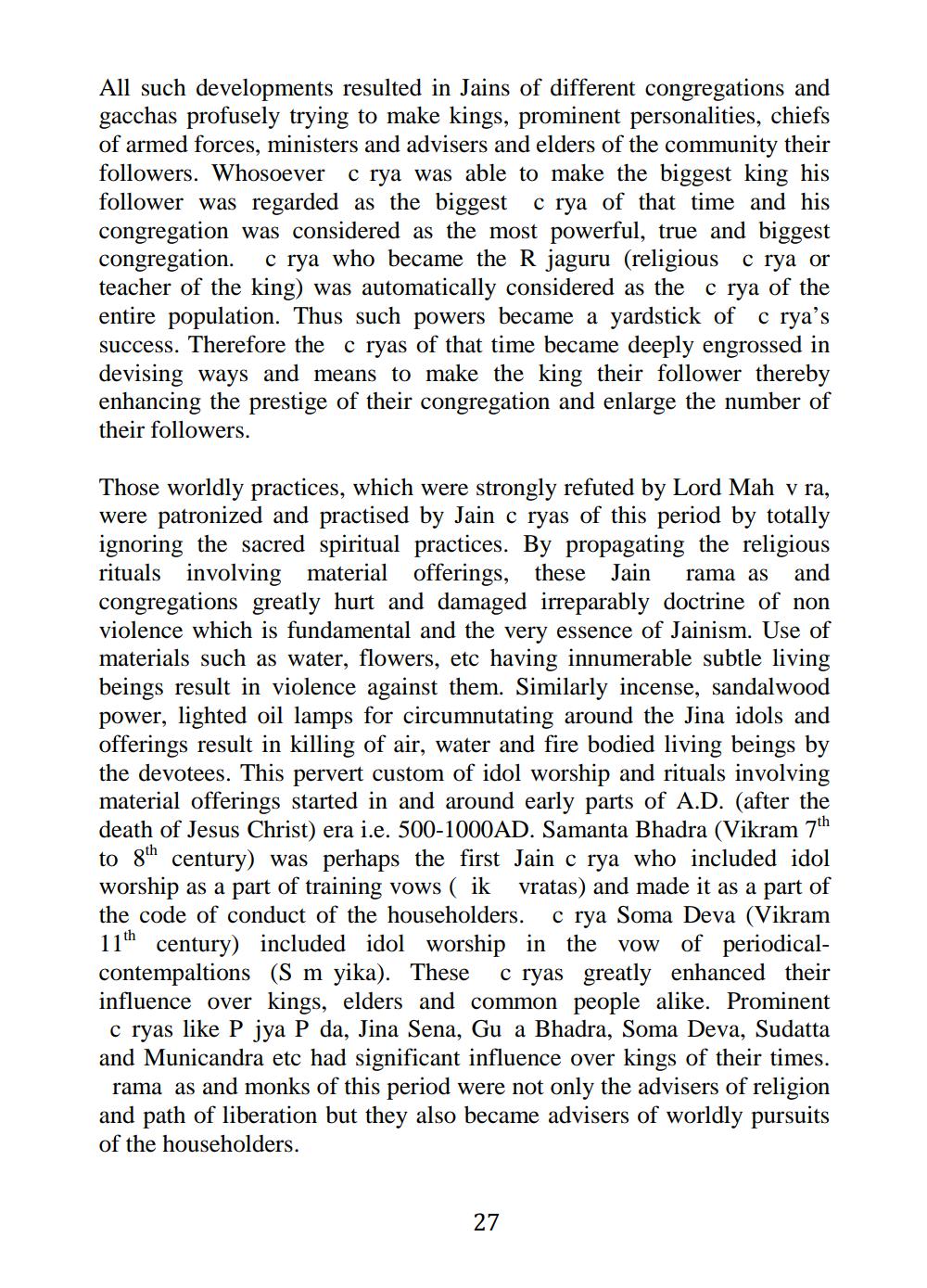________________
All such developments resulted in Jains of different congregations and gacchas profusely trying to make kings, prominent personalities, chiefs of armed forces, ministers and advisers and elders of the community their followers. Whosoever c rya was able to make the biggest king his follower was regarded as the biggest c rya of that time and his congregation was considered as the most powerful, true and biggest
ngregation. c rya who became the R jaguru (religious c rya or teacher of the king) was automatically considered as the c rya of the entire population. Thus such powers became a yardstick of c rya's success. Therefore the c ryas of that time became deeply engrossed in devising ways and means to make the king their follower thereby enhancing the prestige of their congregation and enlarge the number of their followers.
Those worldly practices, which were strongly refuted by Lord Mah v ra, were patronized and practised by Jain c ryas of this period by totally ignoring the sacred spiritual practices. By propagating the religious rituals involving material offerings, these Jain rama as and congregations greatly hurt and damaged irreparably doctrine of non violence which is fundamental and the very essence of Jainism. Use of materials such as water, flowers, etc having innumerable subtle living beings result in violence against them. Similarly incense, sandalwood power, lighted oil lamps for circumnutating around the Jina idols and offerings result in killing of air, water and fire bodied living beings by the devotees. This pervert custom of idol worship and rituals involving material offerings started in and around early parts of A.D. (after the death of Jesus Christ) era i.e. 500-1000AD. Samanta Bhadra (Vikram 7th to 8 century) was perhaps the first Jain crya who included idol worship as a part of training vows ( ik vratas) and made it as a part of the code of conduct of the householders. c rya Soma Deva (Vikram 11th century) included idol worship in the vow of periodicalcontempaltions (S m yika). These c ryas greatly enhanced their influence over kings, elders and common people alike. Prominent
c ryas like Piya P da, Jina Sena, Gu a Bhadra, Soma Deva, Sudatta and Municandra etc had significant influence over kings of their times.
rama as and monks of this period were not only the advisers of religion and path of liberation but they also became advisers of worldly pursuits of the householders.
27




